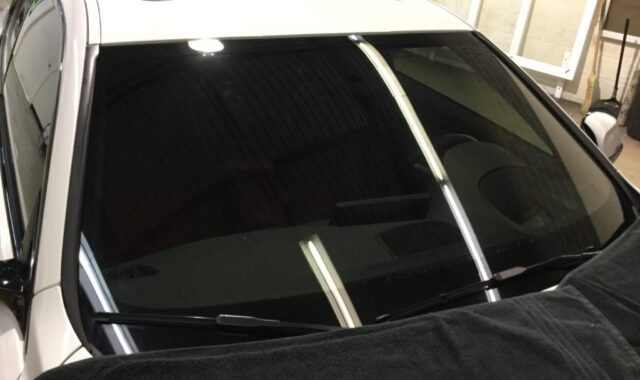Window tinting does more than just up the appearance of your car. It can also provide a range of other benefits, like hiding personal belongings from thieves and protecting you from harmful UV rays.
There are thousands of options out there when it comes to choosing a tint for your windows. This can make things confusing for car owners who want to step into the window tinting world. Auto body experts here at SRS Tinting Solutions can help you narrow down the options as well as figure out what type of window tint is best for you, your budget and your car.
What Is Window Tinting?
Window tinting is the process of applying a sheet of film onto the inside of your car’s window to darken it. The main purpose of doing this is to reduce the amount of heat and radiation, which reaches into the cabin of your car. But many people like window tinting just for its aesthetic
value. The thickness of the film, as well as the material, can vary. There are also different laws and restrictions regarding how dark the film can be. So be sure to check out your province’s window tinting laws and guidelines before proceeding.
UV rays do more than just make you squint. Anything that is exposed to them will fade over time, and that includes the interior of your car. Window tinting can effectively help with reducing that damage. Tinting also helps to keep the interior of your car cool in the summer and insulated during the winter. Glare from headlights or sunlight is also reduced greatly.
Window tinting also helps with privacy and security because others cannot see inside your car’s cabin easily, or at all. So you are able to conceal your personal belongings as well as the passengers in your vehicle. Just think about the use of window tinting on limousines.
Keep in mind that having a tint that is too dark is dangerous, especially with driving at night. In fact, in Canada, you can only tint the top 15 cm of your front windshield. Guidelines and laws vary from province to province.
Types Of Tinting
There are many options available when it comes to tinting your windows. You can either purchase a vehicle with its windows already tinted or get your windows tinted aftermarket. You can purchase window tints at automotive stores in a kit or rolls and choose from a variety of different shades of darkness. The tinting has one side that is an adhesive, which is the side that is placed onto your window for application. The lower the number of films means the darker it will be and less light will be capable of passing through the tint. You can either DIY your window tint or get it professionally applied.
Using film to tint your windows is the most common method. It is also the least expensive option available. These films are usually dyed or metalized so that they can convert UV rays into infrared radiation. You can also opt for non metallic film. This is made out of a ceramic blend. Ceramic window film offers more benefits and is better able to control heat and increases UV ray blockage. There is also something called OEM tinted glass, where the tint is added while they construct the actual glass for your windows. And lastly, you can opt for something called coated window tinting. With this method, a solution is applied to the surface of the window and it is also available in a spray form. But, this type of tinting is difficult and is done by a professional.
Tinting Quality
With window tinting, you get what you pay for. While there are options from a wide price range, typically lower pricing means lower-quality tinting that won’t last as long as higher priced, higher quality tinting. This is one of the trade-offs you’ll need to consider when looking for the right window tint for your needs.
When it comes to doing it yourself or going with a professional, we, of course, recommend going with a professional. While you might shave off a few dollars by trying to apply it yourself, there are many things that can go wrong. Like uneven application or bubbling. Whereas with professional tinting, you won’t experience any of those kinds of problems.
Choosing The Right Shade Of Tint
The tint shade you choose ultimately depends on the laws in your province, and what you are looking to accomplish with your tinting. If you don’t really care about things like privacy or if you don’t even want to darken your windows, you can actually go for a clear UV-reflecting tint film. But if you did want to enhance the look of your car, then you have the option of going with a light, medium or dark/limo tint.
Taking Care Of Your Window Tint After Application
Once you’ve taken the plunge and had your windows tinted, you should avoid opening your windows and washing your windows for at least three to four days after getting it installed. This will help you with ensuring the tint film is fully dried before anything. If you expose your tint to any moisture before it is fully dried, it can result in bubbling underneath the film. However, it’s alright to wash the exterior of your car, because the window film is only on the interior of the windows. If you want to clean your windows, use a paper towel or cloth and an ammonia-free cleaner.
Besides changing or improving the look of your car, window tints are able to protect you and your car from heat, UV rays and sun damage, and can even prevent glass from shattering during an accident. If you are interested in getting your windows tinted, it’s always a good idea to do your own research and consult a professional.
Author Bio:
Rhett Desormeaux is a content writer currently working with BreezeMaxWeb. He’s a passionate writer and loves studying ancient history, especially Bronze Age civilizations.






